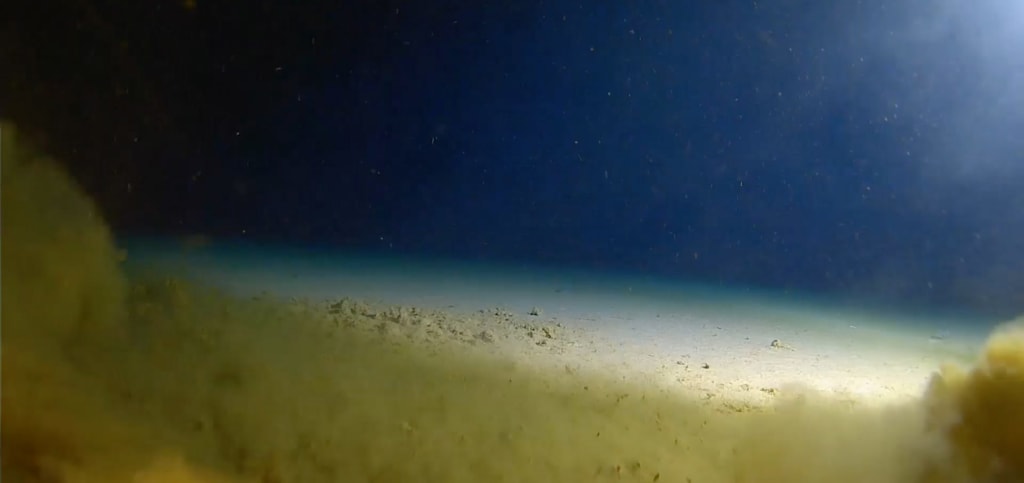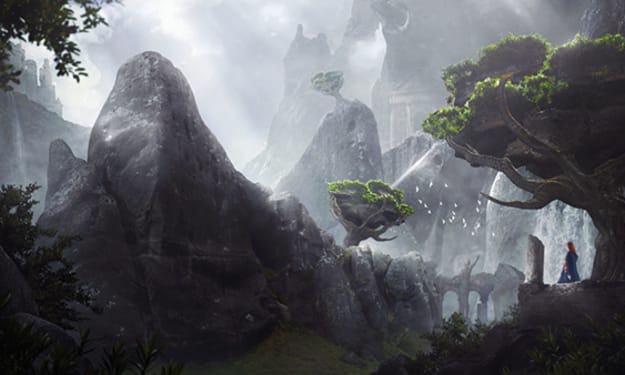
The remote ocean is a universe of limits . Such a long ways in this series, the series of investigations at the manner by which creatures have adjusted to make due in the chilly dim profundities investigated.
The biological systems of this unforgiving domain, perceived how networks of life grip to whatever wellspring of energy they can find. From vents of superheated water to the remains of indented whales be that as it may.
Presently, it is the ideal time to jump much more profound furthermore. Find where life is pushed to its outright cutoff points for at the lower part of the Pacific sea. The ocean bottom enlarges into a vast void of obscurities fish that appear to need faces rambling fields of microscopic organisms.
Also, Goliaths that look like life from another planet we should investigate the covered up universe of the Mariana Channel. The notorious Mariana Channel sits like a sickle molded mark in the floor of the pacific. A 2550 kilometer long, 69 kilometer wide crack that dives down into an unadulterated dark void at the base. It has the most profound known area on the planet.
The challenger deep, 11 033 meters, or 36 200 feet, below the waves. The challenger deep is just one part of a global network of deep scars that cut across the ocean floor. Features that formed from a process called subduction.
In the case of the Mariana Trench, the western edge of the pacific plate was thrust beneath the smaller Mariana plate to the west, creating the deep fracture. Molten material then rose through volcanoes close to the trench, building the nearby Mariana islands.
At the point when the team on board the HMS challenger project, a weighted sounding line over the side of the vessel and found they required more rope. They had not anticipated that there should be an area so profound yet fresh insight. About its revelation grabbed the attention of the aggressive realizing it existed essentially wasn't sufficient what's more.
A couple thought for even a second to dare to the base in 1960, 85 years after the challenger profound was found on that spearheading journey two men set off to arrive at the base.
Jacques Piccard furthermore, naval force lieutenant Wear Walsh shielded simply by a confined shower escape sub called the triesta their five-hour plunge was loaded with challenges the water tension close to the base was almost multiple times more noteworthy than air tension. Adrift level during the excursion this caused the seeing window to break restricting their time spent on the ocean bottom to just 20 minutes.
Indeed, even in such a short measure of time what they saw would stun the logical local area life. Pale shrimp and wallow like fish alongside what they depicted as a dim brown diatomaceous overflow that covered the ocean bottom, Piccard portrayed this second with fervor in a book about the journey here in a moment was the response that researcher had requested the many years might life at some point exist in the best profundities of the sea.
It could at the point when James Cameron continued in the triste strides on board the profound ocean challenger in 2012 . He also saw the rambling microbial mats strange looking filamentous bunches of microorganisms living off synthetic substances from changed rocks 10, 900.
Also, twelve meters or 35 , 800 and three feet down in a dreary world. These microscopic organisms support more complex animals, for without daylight bigger creatures must rather depend on the energy created by microbes. Going through chemosynthesis the remote ocean comparable to photosynthesis.
There is a recording taken by an automated Japanese sub known as kaiko in 1996. Having arrived at a profundity of 10 , 897 meters it denoted the most profound jump for an automated submarine at that point. Its objective was to test microorganisms from the mats that Piccard and Walsh had noticed. Almost 40 years sooner they found that some of these bacterial species seemed, by all accounts, to be obligately barophilic . Meaning they flourished under high ecological tensions demonstrating that that life would be able just exist in additional moderate circumstances was imperfect yet.
In 1998 , kaiko got back to the challenger profound. Furthermore, coincidentally found more complicated life hirondelia gigas an immense amphipod animal varieties. This discovery was a bit of a mystery because the extreme pressures of the deep sea cause the calcium carbonate that makes up the shells of amphipods and many other marine animals to dissolve more easily in water. Leaving their soft bodies vulnerable. Amphipods are typically not found below about 5,000 meters, or 16,000 feet, but in the Caicos Islands, there was a huge amphipod that still had its tough exoskeleton.
Since then, it has been discovered that they use chemicals in their intestines to extract aluminum ions from the sea floor mud while foraging for food in their role as detrivores. These amphipods play a crucial role in the ecosystem because they serve as a cleanup crew and have enzymes that can digest wood.
In later times, distant submarines have gotten more peculiarities of the Mariana Channel in their headlights among the most plentiful occupants are the holothurians ocean cucumbers. Like the amazing ocean pig with its ring of taking care of appendages that it uses to filter through the mud also. Take hold of food a few researchers accept that Piccard's fish was as a matter of fact an ocean cucumber for it is believed that fish can't endure where the tension is so amazing that it would break up the bones of any vertebrates.
The most profound realized fish flourishes at profundities of 8, 000 meters or 26 , 200 feet. Still two kilometers over the challenger profound, the Mariana snail fish found in 2014. Yet given the logical name sudola paris sui to remember sub-lieutenant Herbert Swire from the HMS challenger .
Yet, snailfish and amphipods are not the just weirdos tracked down in the channel immense xenophianophores develop to be 20 centimeters in measurement yet comprise of just a solitary cell. Ruthless tunicates called ocean spurts anchor their bodies to the sides of gulches in weight of passing prey. While remote ocean ax fish use bioluminescence to mix in with their environmental factors.
While just looks at these extraordinary life forms have been recorded their overflow goes to show that life will continuously track down an approach to make due in any event, when confronted with the extraordinary challenge of living at the core of the sea's hidden world
Research on Mariana microorganisms could lead to significant advancements in biomedicine and biotechnology and shed light on the story of life's emergence on Earth. However, even the deepest depths are already within reach of human-driven destruction. Plastic has been discovered in a location that we barely understand. Who knows what vital discoveries might vanish before we come to understand their significance. It is likely that many new species await discovery. This will help us piece together the puzzle of how animals can survive in such extremes.
The remote ocean is a universe of limits . By which creatures have adjusted to make due in the chilly dim profundities. The biological systems of this unforgiving domain and perceived how networks of life grip to whatever wellspring of energy they can find. From vents of superheated water, to the remains of indented whales be that as it may.
Presently, it is the ideal time to jump much more profound. Furthermore, find where life is pushed to its outright cutoff points for at the lower part of the Pacific sea. The ocean bottom enlarges into a vast void of obscurities . Fish that appear to need faces rambling fields of microscopic organisms also. Goliaths that look like life from another planet we should investigate the covered up universe of the Mariana Channel.
The notorious Mariana Channel sits like a sickle molded mark in the floor of the pacific . A 2550 kilometer long 69 kilometer wide crack that dives down into an unadulterated dark void. At the base it has the most profound known area on the planet. The challenger deep, 11 033 meters, or 36, 200 feet, below the waves. The challenger deep is just one part of a global network of deep scars that cut across the ocean floor, features that formed from a process called subduction. In the case of the Mariana Trench, the western edge of the pacific plate was thrust beneath the smaller Mariana plate to the west, creating the deep fracture. Molten material then rose through volcanoes close to the trench, building the nearby Mariana islands.
In 1960, 85 years after the challenger profound was found on that spearheading journey. Two men set off to arrive at the base , Jacques Piccard. Furthermore, naval force lieutenant Wear Walsh shielded simply by a confined shower escape sub called the triesta. Their five-hour plunge was loaded with challenges the water tension close to the base was almost multiple times more noteworthy than air tension adrift level during the excursion. This caused the seeing window to break restricting their time spent on the ocean bottom to just 20 minutes indeed. Even in such a short measure of time what they saw would stun the logical local area . Life pale shrimp and wallow like fish alongside what they depicted as a dim brown diatomaceous overflow that covered the ocean bottom Piccard portrayed this second with fervor in a book about the journey here in a moment was the response that researcher had requested.
The many years might life at some point exist in the best profundities of the sea . It could at the point when James Cameron continued in the triesta's strides on board the profound ocean challenger in 2012. He also saw the rambling microbial mats strange looking filamentous bunches of microorganisms living off synthetic substances. From changed rocks 10, 900 also, twelve meters or 35 , 800 and three feet down in a dreary world .
This discovery was a bit of a mystery because the extreme pressures of the deep sea cause the calcium carbonate that makes up the shells of amphipods and many other marine animals to dissolve more easily in water, leaving their soft bodies vulnerable. Amphipods are typically not found below about 5,000 meters, or 16,000 feet, but here in the Caicos Islands, there was a huge amphipod that still had its tough exoskeleton.
Since then, it has been discovered that they use chemicals in their intestines to extract aluminum ions from the sea floor mud while foraging for food in their role as detrivores. These amphipods play a crucial role in the ecosystem because they serve as a cleanup crew and have enzymes that can digest wood.
Research on Mariana microorganisms could lead to significant advancements in biomedicine and biotechnology and shed light on the story of life's emergence on Earth. However, even the deepest depths are already within reach of human-driven destruction. Plastic has been discovered in a location that we barely understand. Who knows what vital discoveries might vanish before we come to understand their significance. It is likely that many new species await discovery. This will help us piece together the puzzle of how animals can survive in such extremes.
About the Creator
Enjoyed the story? Support the Creator.
Subscribe for free to receive all their stories in your feed. You could also pledge your support or give them a one-off tip, letting them know you appreciate their work.






Comments
There are no comments for this story
Be the first to respond and start the conversation.